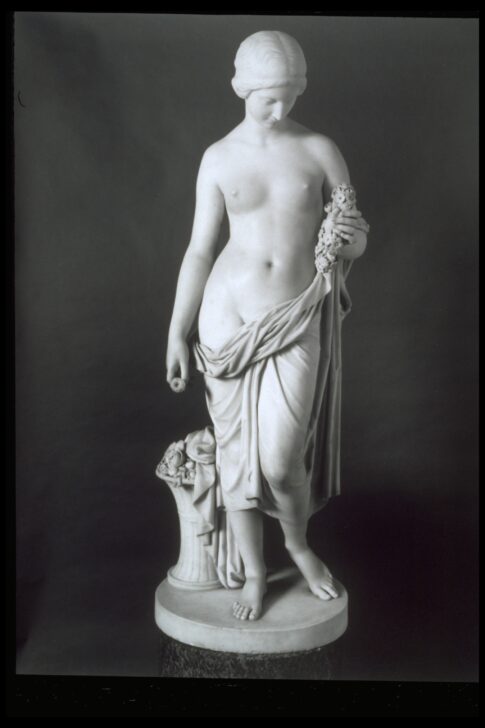Flora
Richard James Wyatt

Description
March 28, 2009
By the beginning of the nineteenth century there was an enormous increase in the demand for gallery sculpture (works created for public display in their own right rather than to decorate architecture or gardens) and Wyatt, like many sculptors of his time, moved to Rome—the epicenter of the neoclassical revival—to train in the techniques of the classical masters. He soon became a much sought after sculptor, and his statues were eagerly collected.
Wyatt was known as a virtuoso carver and was celebrated for his ability to portray the female form. His statue of Flora is skillfully composed with painstaking attention to detail and texture; the highly finished surface creates a soft, warm effect for which the artist was renowned. In Roman myth, Flora was the goddess of the spring and had authority over flowers, grain, and fruit; here she is seen with a basket of flowers—the symbol of her domain—at her feet. Her left hand holds the corner of her drapery, which falls away to reveal her naked form.
Wyatt had just completed Flora at the time of his death. An obituary writer described seeing it in his studio only days before and admiring “the last touches which his graceful chisel had given to the finished statue of Flora, on which he had been for some time engaged.”
Subject Matter:
Flora, the goddess of flowers from Roman mythology, reflects the popularity of Neo-classical taste during the mid-19th century.
Physical Description:
White marble sculpture of female figure, partially nude with a cloth draped loosely around her waist and over her left forearm. She holds a cluster of flowers in her left hand, and a single bloom in her right; a basket of flowers located on base to left and slightly behind figure.
Usage Rights:
If you are interested in using an image for a publication, please visit https://umma.umich.edu/request-image/ for more information and to fill out the online Image Rights and Reproductions Request Form.